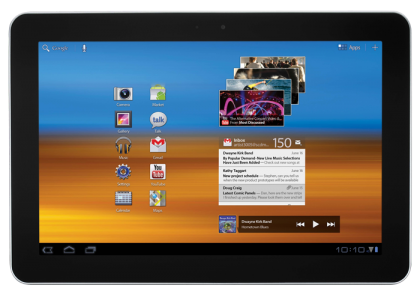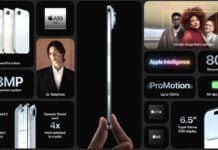Acum cateva luni de zile Apple a actionat Samsung in judecata in Marea Britanie sustinand ca asiaticii ii incalca anumite brevete de inventie cu privire la design-ul si functionalitatea tabletei. Desi cei de la Apple si-au sustinut pretentiile in fata instantei din Marea Britanie, judecatorul care a prezidat cazul a hotarat ca tabletele celor de la Samsung nu incalca brevetele Apple pentru ca nu sunt la fel de „cool”. Judecatorul sustine ca tabletele Samsung nu pot fi condundate cu cele ale Apple pentru ca nu au un design la fel de simplu si de frumos, si nu au chiar aceleasi functii.
Samsung Electronics won an intellectual property ruling against Apple as a U.K. judge said the Galaxy tablet isn’t “cool” enough to be confused with the design for the iPad. The Galaxy tablet doesn’t infringe Apple’s registered design, Judge Colin Birss said in a ruling today in London. He said that consumers weren’t likely to get the two tablet computers mixed up. The Galaxy tablets “do not have the same understated and extreme simplicity which is possessed by the Apple design,” Birss said. “They are not as cool.”
Judge Birss found that Samsung’s products were distinctive because they were thinner and had “unusual details” on the back. He gave Apple 21 days to appeal the decision.
Judecatorul sustine ca tabletele Samsung sunt mai subtiri decat tabletele iPad si pe spate au elemente de design ciudate, deci utilizatorii nu au cum sa confunde un produs cu celalalt. Sincer sa fiu aceasta este prima oara cand un judecator invoca asemenea motive pentru a respinge un asemenea proces, insa nu este exclus ca altii sa ii preia atitudinea. Drept raspuns la aceasta victorie cei de la Samsung au publicat un comunicat de presa in care descriu intreaga problema si desigur ca ataca Apple pentru curajul de a ii da in judecata.
“In a ruling on July 9, 2012, the High Court of England & Wales sided with Samsung that the designs of the Galaxy Tab series of products are ‘different’ from an Apple tablet design, and do not infringe Apple’s Registered Community Design No. 181607-0001. Samsung products subject to this trial were the Galaxy Tab 10.1, the Galaxy Tab 8.9, and the Galaxy Tab 7.7.
“Samsung had requested this voluntary trial in September 2011, in order to oppose Apple’s ongoing efforts to reduce consumer choice and innovation in the tablet market through their excessive legal claims and arguments. Apple has insisted that the three Samsung tablet products infringe several features of Apple’s design right, such as ‘slightly rounded corners,’ ‘a flat transparent surface without any ornamentation,’ and ‘a thin profile.’
“However, the High Court dismissed Apple’s arguments by referring to approximately 50 examples of prior art, or designs that were previously created or patented, from before 2004. These include the Knight Ridder (1994), the Ozolin (2004), and HP’s TC1000 (2003). The court found numerous Apple design features to lack originality, and numerous identical design features to have been visible in a wide range of earlier tablet designs from before 2004.
“Equally important, the court also found distinct differences between the Samsung and Apple tablet designs, which the court claimed were apparent to the naked eye. For instance, the court cited noticeable differences in the front surface design and in the thinness of the side profile. The court found the most vivid differences in the rear surface design, a part of tablets that allows designers a high degree of freedom for creativity, as there are no display panels, buttons, or any technical functions. Samsung was recognised by the court for having leveraged such conditions of the rear surface to clearly differentiate its tablet products through ‘visible detailing.’
“Samsung welcomes today’s ruling by the High Court, which affirms Samsung’s commitment to protect its own intellectual property rights while respecting those of other companies. Samsung believes Apple’s excessive legal claims based on such a generic design right can harm not only the industry’s innovation as a whole, but also unduly limit consumer choice.”





























Misto
Dar galaxy nexus e cool.
O alta sursa da motivarea, iar acolo nu scrie nimic de genul „cool” cred ca exagereaza sursa ta.
Ia sa vedem, ce sursa e? Toata lumea a prelua Bloomberg.
nexus e cool :))? poate doar la portofel ,dar din alte pct de vedere,o copie reusita a celor de la samsung pt a incerca sa rupa piata de tablete cu pretul,nu recomand nimik de la samsung ,macar sa-si faca si ei tabletele interesant,la marketing mai au de lucrat
:))))
Asta da scuza !!:))) Mor de ras!!!
@Anonim dute pana la baie,ia o mana de apa rece rece si da-ti cu ea in fata,poate poate te trezesti si tu si nu mai vii sa aberezi pe aici,tableta nexus este facuta de google in parteneriat cu asus,ce tot aberezi tu pe aici,stiu ca ura ta fara logica fata de competitorul direct al apple(samsung) nu iti da pace,dar totusi bai baiatule….
@yoyo dai pace cred ca e fratele lui KFF
Au bicat baietii BAC-ul si rabufnesc pe bloguri , Victor ?
corect e „picat” si nu „bicat” măi @KFF, mai treci pe la şcoală…..
Diablo amice, daca ala trebuie sa mearga la scoala pentru ca a apasat o tasta gresita, tu unde trebuie sa mergi (Marte) dupa ce pui 5 puncte de suspensie ?
@ Anonim: trebuie sa admiti ca TVurile sunt super 😀
[…] Recent Apple a pierdut un proces intentat companiei Samsung in care sustinea ca design-ul tabletei iPad a fost copiat de compania asiatica atunci cand a […]